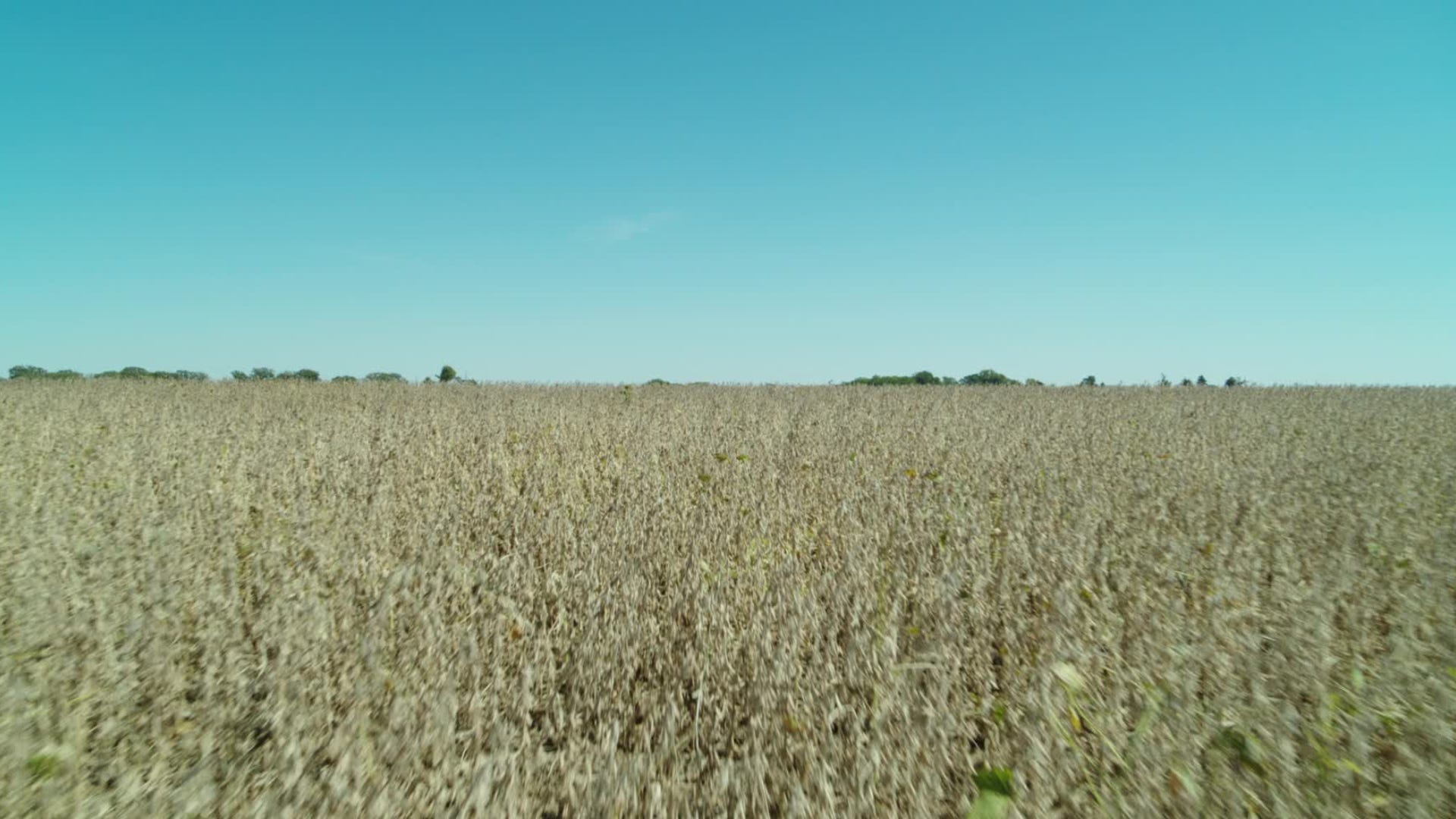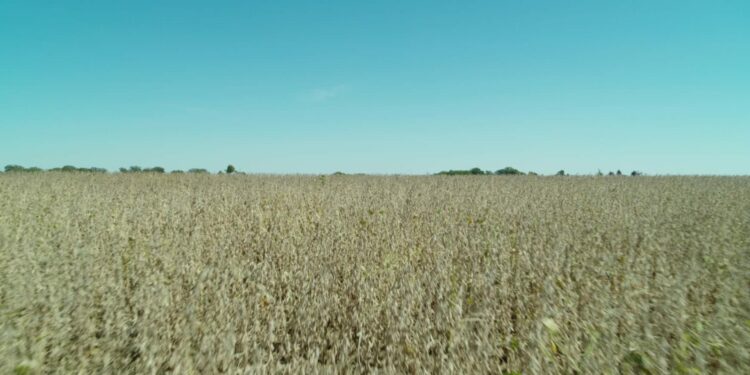With a strong 2025 farm bill, we could support farmers in getting out of the commodity game, thereby limiting the supply of the corn and beans that are grown, in order to meet the true demand.
Beth Hoffman
| Guest columnist

Corn sweat: How agriculture impacts our climate
Explore how corn sweat, a natural evapotranspiration process affects record-breaking temps and recent weather changes increasing the extreme heat.
Beth Hoffman has reported on food and agriculture for more than 20 years.
Well, here we are again.
The corn and soybeans drying in the fields look great, and reports of high yields are front-page news. Yet, alongside the stories of a robust impending harvest are features explaining how the price of commodities is dropping steadily and is expected to stay low for years to come. While getting the highest yields might seem like a great idea for individual farmers, overall, it oversupply and low prices in the marketplace.
We could respond to this in many ways. One way — the way the Trump administration handled a similar situation from 2018 to 2020 — was to literally hand out taxpayer dollars to farmers, making us farmers dependent upon government handouts to survive. And while it helped pay the bills in the short term, this kind of “fix” further entrenches the status quo, where buyers — multinational corporations — have continuous access to cheap grain, while farmers struggle to cover their costs.
Another way to address sinking farmer income is to increase crop insurance subsidies and USDA financial protections (ARC and PLC) to ensure that farmers will continue to earn the same amount year after year, even if the market does not drive the income. This crop insurance subsidy, available from only 12 companies in the country, cost America $17 billion in 2022, a year that was also good for commodity prices (corn averaged $6.49 a bushel). And even though crop insurance is highly subsidized by the US government, it is often still not cheap for farmers.
These options are akin to sticking our collective heads in the sand, hoping that better times will arrive without us putting in any effort to improve the situation. It might be called “Waiting for America to be Great Again,” although things for farmers have rarely been great (look at the graph of corn prices above). These two ideas are also very un-capitalistic solutions to very capitalistic problems — the subsidies primarily support crops used to produce raw materials for large corporations, such as animal feed or biofuels, not to put food on our plates.
Continuing to grow excessive quantities of corn and soybeans in Iowa also seems to defy a most basic economic principle, namely that taking some of the world’s most fertile and expensive land and producing cheap ingredients on it is a losing proposition. A recent sale of prime corn-growing land in Iowa went for $16,000 an acre; on average across the state, in January 2024 land was valued at of $11,598.07 an acre.
But let’s do the math: the Iowa average yield for corn is 200 bushels per acre. At $4 a bushel (and as I write, the price is $3.82) a farmer will earn $800 an acre. 2024 estimates calculate that the cost to grow an acre of corn was $901.86 (including costs from seed and sprays to labor and machinery). The break-even point for corn is above $4.50, well above its expected price for years to come.
There is another way forward.
Iowa could use our fertile soils and (mostly) abundant rains, our deep agricultural experience and knowledge of farming techniques to turn our industry into something more economically and environmentally viable in the long run. With government and industry support, Iowa could be known not only for producing the most, but for producing the best.
The best apples, cider, and hard cider. The best watermelons. The best barley and its value-added (and much more profitable) products, whiskey and beer. The best-raised hogs, with the most delicious and nutritious pork chops and cured and dried hams, able to garner higher prices than confinement farmers could ever dream of.
With a strong 2025 farm bill, we could support farmers in getting out of the commodity game, thereby limiting the supply of the corn and beans that are grown, in order to meet the true demand.
Opportunities to support a better system are abundant — and many are detailed in the Iowa Food System Coalition’s Setting the Table for All Iowans. America — and Iowa specifically — could invest the money in developing ways out of this cyclical conundrum, likely for far less expensive than the current system.
Charge a tax on advertisements for soda and chips, sugar cereals and sports drinks, and use the money to support farmers making the transition to growing table food.Support more local markets (ie small grocers), “market bucks” programs, and educational classes offering cooking and nutrition programs in schools and at University extension offices, to create better accessibility and knowledge of healthy food. Better fund USDA offices — the offices that already exist in every county in Iowa — to hire more, and better educated, employees, ready to help farmers access the information and technical help they need to grow more than just corn. Demand that land grant universities receiving state and federal funding expand their agricultural education to include a wider variety of crops to promote human health. (Iowa State University received $35,162,339 in state and federal funding for agricultural programs in the 2022-23 school year, and almost half of the $64.5 million in grants to faculty and students came from federal funding.)
I could go on, but my point is that we have many options.
Instead of being known across the country for mile after mile of corn and for struggling rural communities; for high cancer rates and polluted rivers, we could create an Iowa living her best life. An Iowa that does not settle for mass production standards, but rises to the top of the class, using our government and corporate supports to create a plethora of products that stand out from the rest.
October is National Farm to School Month. Take a minute to purchase a fresh, local, Iowa-grown product from a nearby farmer. Or use your time to ponder why on earth it is so difficult to do so in a state with so many great resources, and call your legislator to chat about supporting farmers to grow food in Iowa.
Beth Hoffman has reported on food and agriculture for more than 20 years, and now raises grass-finished beef and goats on 530 acres in south-central Iowa with her husband. More information about their farm can be found at iowa-farm.com.
Source link : http://www.bing.com/news/apiclick.aspx?ref=FexRss&aid=&tid=66f579ec7ea8481c94b7115bfabb931a&url=https%3A%2F%2Fwww.usatoday.com%2Fstory%2Fopinion%2Fcolumnists%2Fiowa-view%2F2024%2F09%2F26%2Fiowa-can-do-better-farm-income-than-subsidies-bailouts%2F75384432007%2F&c=13761817815558308813&mkt=en-us
Author :
Publish date : 2024-09-25 23:50:00
Copyright for syndicated content belongs to the linked Source.




